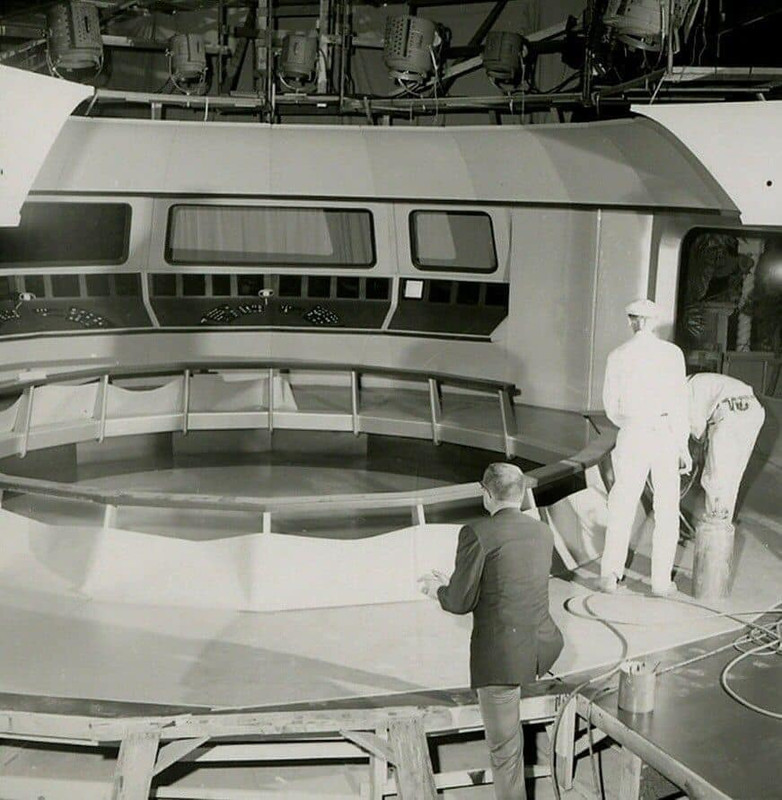and later on the wedge is gone

In my opinion, when we see the edge of Spock's station, that is an example of "camera through wall or floor," a filming technique that reveals the absence of a "fourth wall" on purpose, to facilitate telling the story. The audience accepts it as part of the visual narrative.
You've seen it in other shows: the camera is looking at actors in the living room, and then it slides sideways, right across a wall and into the kitchen. It shows that there is no fourth wall. Or sometimes the camera slides straight up, through the ceiling, and into a room upstairs. No "real" point of view can pass through walls, but the audience rolls with it.
Sometimes the move is faked with film editing, as it was in the pilot episode of Lost in Space when the elevator goes down to the lower deck. That's a different thing. But sometimes the set is built to be filmed contiguously, with no fourth wall. The greatest example ever was The Ladies Man (1961). Look at this magnificent "mansion" set, built like a giant dollhouse:
https://en.wikipedia.org/wiki/The_Ladies_Man#Production
So anyway, when we see the edge of Spock's station, the camera is supposed to be looking through the wall with cinematic x-ray vision. And we allow it, to enjoy that point of view.








